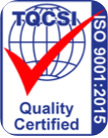About Us
Summary
Thermal gap pads, EMI shielding materials, and microwave-absorbing materials are essential in managing the thermal and electromagnetic environments of advanced electronic systems.
Thermal gap pads are designed to fill air gaps between heat-generating components and heat sinks or chassis, providing efficient heat transfer that prevents overheating in devices like CPUs, power transistors, and batteries. They are highly conformable, ensuring proper contact even in uneven surfaces, which improves heat dissipation and operational reliability.
EMI shielding materials block unwanted electromagnetic interference (EMI) that can compromise the functionality of sensitive electronic equipment. These materials are often used in gaskets or coatings around electronic enclosures, protecting devices from external EMI sources and preventing internal signals from leaking, ensuring stable performance in high-frequency environments.
Microwave-absorbing materials are used to absorb radar waves and reduce radar cross-section (RCS), which is vital for stealth technology. By absorbing rather than reflecting radar signals, these materials make military platforms like aircraft and ships less detectable to radar systems, enhancing operational security.
These materials are critical across various industries that demand reliable thermal and electromagnetic management. Thermal gap pads help manage heat in compact electronics and high-performance systems, while EMI shielding ensures interference-free operation in telecommunications, medical devices, and industrial electronics. Microwave-absorbing materials play a crucial role in defense applications where stealth and low observability are essential, such as in aircraft, naval vessels, and ground vehicles.
PRP has CNC capability to fabricate complex shapes and profiles, in both low and high volume, which stocking class leading materials through it’s global supply chain.
What they are used for
Applications
- Defense and aerospace systems for radar, communication, and electronic warfare platforms.
- Telecommunications infrastructure for preventing electromagnetic interference in data transmission.
- Automotive industry, especially in electric vehicles and high-performance engines.
- Electronics and semiconductor manufacturing for managing heat and ensuring reliable performance.
- Medical devices to ensure sensitive electronics operate without interference or overheating

